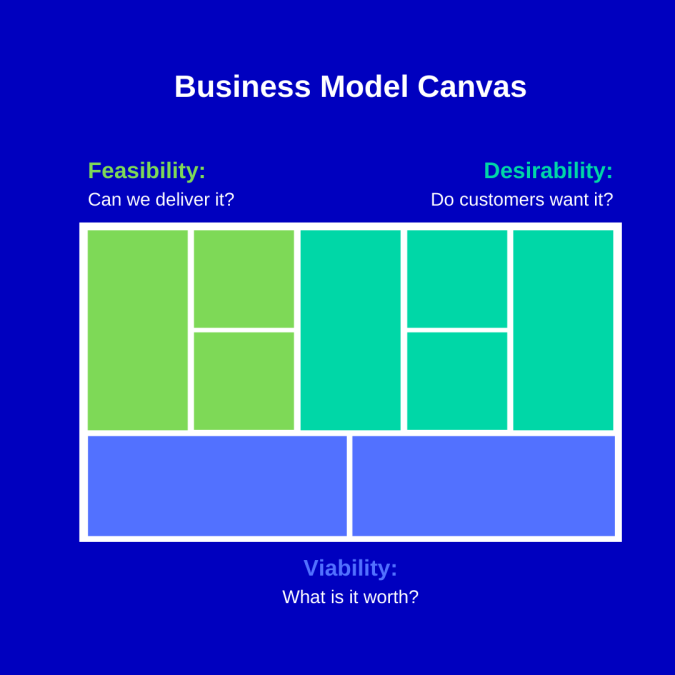How to fill in a Business Model Canvas?

If you are interested in applying to the EdTech Incubator Helsinki, read this post carefully! Uploading a filled BMC is part of our application form.
Most of us have heard about this simple, yet thorough tool which can be used to map out a new idea or business. This nine block canvas essentially shows the logic of how a company intends to deliver value and make money. Filling the canvas can be easy and quick – but it can also make you think about your business a bit more strategically. Here are a few tips on filling the legendary BMC!
1. Select your tools
Business Model Canvas is a great tool to map out your idea or innovation. When correctly filled, it shows how all parts of your business work together.
Business Model Canvas is a single page tool with 9 connected boxes. It can be sketched anywhere, but creating one digitally with e.g. Miro, Google Slides, Canva or other such tool, you’ll be able to access and edit the BMC when needed.
2. Understand the Business Model Canvas
The BMC is made up of nine building blocks showing the logic of how a company intends to deliver value and make money.
The nine blocks of the canvas cover the three main areas of a business: desirability, viability and feasibility. Below you’ll find a diagram to help you out. The desirability-section is usually the easiest to start with, as companies know their customers quite well.

3. Fill in the blocks
Customer Segments
Your business model may have one or several large or small customer segments. You must make a conscious decision about which segments to serve and which segments to ignore.
- For whom are we creating value?
- Who are our most important customers, clients, or users?
Value Propositions
Your value proposition is the reason why customers turn to your company over another. It solves your customer’s problem or satisfies your customer’s need. Some value propositions may be innovative and represent a new or disruptive offer. Others may be similar to existing market offers, but with added features and attributes.
Customer Relationships
Your customer relationships describe the types of relationships your company establishes with specific customer segments.
- Long vs short term relationship
- Personal contact vs. technology
- Importance of new vs. old customers
Channels
Your channels describe how your company communicates with and reaches your customer segments to deliver your value proposition. Your channels are customer touch points that play an important role in the customer experience.
Key Partnerships
The key partnerships block describes the network of suppliers and partners that make the business model work.
- Who are our key partners?
- Who are our key suppliers?
- Which key resources are we acquiring from partners?
- Which key activities do partners perform for us?
Key Activities
The key activities block describes the most important things a company must do to make its business model work.
- What key activities do our value propositions require?
- Our distribution channels?
- Customer relationships?
- Revenue streams?
Key Resources
Your key resources describe the most important assets required to make your business model work. They allow your company to create and offer a value proposition, maintain relationships with customers, and earn revenues. Key resources can be e.g. physical, intellectual property, human, financial etc.
Cost Structure
Your cost structure describes all costs incurred to operate your business model.
- What are the most important costs inherent in our business model?
- Which key resources are most expensive?
- Which key activities are most expensive?
Revenue Streams
Your revenue streams represent the ways your company generates cash from each customer segment.
- For what value are our customers really willing to pay?
- How much does each revenue stream contribute to overall revenues in terms of percentages of the total?
4. Testing
Writing something on a canvas doesn’t make it reality. That’s why everything needs to be tested in the real world.
One great way to do this is to apply for the EdTech Incubator Helsinki. The incubator helps you to test and develop your idea and business model in real life with the help of the leading experts. The next batch of the incubator program will be selected in autumn 2022 and the application period will launch in August.
Source: Strategyzer